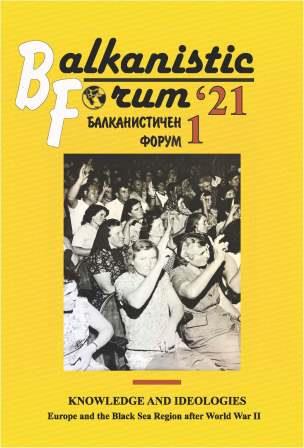The Institutionalization of the Bulgarian Circus between 1944 and 1957
The Institutionalization of the Bulgarian Circus between 1944 and 1957
Author(s): Sylwia SiedleckaSubject(s): History, Cultural history, Social history, Recent History (1900 till today)
Published by: ЮГОЗАПАДЕН УНИВЕРСИТЕТ »НЕОФИТ РИЛСКИ«
Keywords: circus;People’s Republic of Bulgaria; cultural policy; spectacle; theater; institutionalization;
Summary/Abstract: This article analyzes the process of institutionalization of the Bulgarian circus be-tween 1944 and 1957. The appreciation of circus as “an equal member of the large family of socialist arts” was rooted in a belief that it was a democratic spectacle which transcended social divisions and classes. The source of the perception of the circus as an instrument of social change can be traced to pre-war Soviet tradition, when the circus became not only a tool of state cultural policy, but also inspired the most important creators of literary and theater avant-garde. In post-war Bulgaria, in order to improve the quality of performances, interinstitutional cooperation of the circus with literary and theater circles was initiated, and with the purchase of circuses by the state, numerous regulations were introduced in the profession of a circus artist. This purchase was not synonymous with nationalization: the state bought the circuses from the hands of their pre-war owners, allowing them to continue to perform strategic functions in the circuses.At the same time, despite deep institutional changes, the circus after 1944 main-tained its semi-peripheral status of an entertainment spectacle, not worth considering on the part of intellectual elites and unfit for the project of national high art. It is this peripheral potential of the circus as a spectacle not shaped by the refinement of the elites, that opens up new research perspectives which allow us to view the circus as a laboratory of social and cultural change. As a nomadic travelling institution, the circus crossed geographical boundaries and communicated with viewers from cities and villages, as well as representatives of various social groups and strata. On the other hand, multiethnic, international environment of the circus was a space for inten-sive transfer and intercultural dialogue, both in the artistic dimension and in the sphere of everyday interpersonal practices.
Journal: Балканистичен Форум
- Issue Year: 30/2021
- Issue No: 1
- Page Range: 165-178
- Page Count: 14
- Language: English
- Content File-PDF

